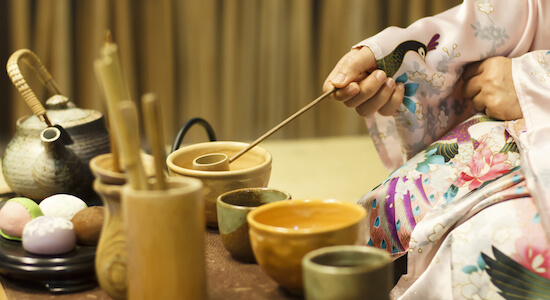Significance of japanese tea ceremony values with ceramic art interpretation.
Significance of japanese tea ceremony values with ceramic art interpretation.
Many of japan s top gardens which should be on every traveler s wish list have teahouses with peaceful views providing a deeper connection with japanese history and culture.
Following a strict set of rituals japanese tea ceremonies may be difficult to fully comprehend for those unfamiliar with it.
People value ceramic aesthetically but not the interpretation of it or the values they put in that made the artwork how it is.
Matcha green tea is savored at the tea ceremonies and the performance of the ceremony is in itself a celebrated art.
People value ceramic aesthetically but not the interpretation of it or the values they put in that made the artwork how it is.
Tea gatherings are classified as either an informal tea gathering chakai 茶会 lit tea gathering or a formal.
The most famous exponent of the tea ceremony was sen rikyū an aesthete at the 16th century court of the military dictator toyotomi hideyoshi who codified the ceremony into a style known as wabi cha meaning roughly simplicity quietude and absence of ornament which still enjoys popularity in japan.
The significance of the japanese tea ceremony is a reminder to stop and smell the roses which might prove especially beneficial during a full day of sightseeing.
It is because the artist does not feel the importance of moral values to be the message of their artwork and mostly.
It is because the artist does not feel the importance of moral values to be the message of their artwork and mostly focuses on the.
In japan tea ceremonies are an integral part of the cultural heritage.
Significance of japanese tea ceremony values with ceramic art interpretation.
And automated cad systems reside in the recognition and interpretation of the meaning.
By adibah ali.
Although the japanese word for the tea ceremony chanoyu literally means hot water for tea the practice involves much more than its name implies chanoyu is a ritualized secular practice in which tea is consumed in a specialized space with codified procedures.
The act of preparing and drinking matcha the powdered green tea used in the ceremony is a choreographed art requiring many.
The tea ceremony is a highly elaborate synthetic art involving different fields such as fine art arts and crafts poetry japanese paintings and calligraphy ikebana japanese flower arrangement tea room architecture garden design kaiseki japanese full course meals and traditional confectionery.
Significance of japanese tea ceremony values with ceramic art interpretation.










